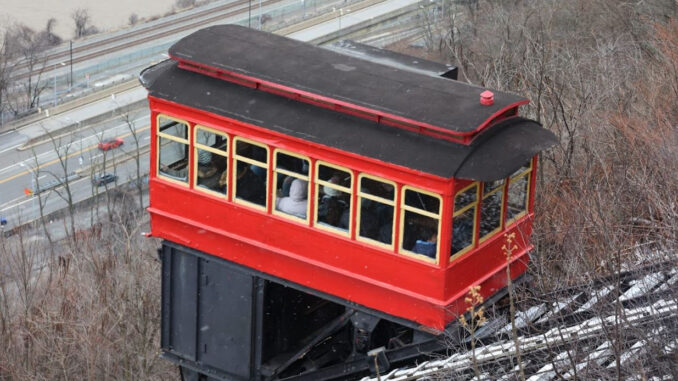
Kaitlyn Hughes | Staff Writer
This article is part two of a series by Kaitlyn Hughes about the importance of public transportation.
With numerous cars on the road creating stress and pollution, Pittsburgh Regional Transit needs to stop reducing service on its routes. In fact, it is imperative for PRT to expand its services throughout the city, instead of forcing residents to find an alternative in an increasingly unreliable network of public transportation.
According to PRT’s website, they claim to “continue to seek ways to improve how [they] serve riders and the community.”
Over the past few months, PRT has cut services for multiple bus routes and light rail lines.
Though PRT claims to seek ways to improve their system, the cut in bus and light rail routes are serious disruptions to the community.
Improved public transit in the city will assist in getting cars off the road, while making the region more accessible for economically disadvantaged residents or any resident who prioritizes other costs over owning a vehicle.
What is normally a 25-minute drive going Downtown from the South Hills turns into an hour-long commute throughout the day, specifically during rush hours.
According to a 2018 report by research agency Inrix, Pittsburgh commuters lost 127 hours in road congestion.
This lengthened commutes and time lost due to road congestion can cause unnecessary stress on drivers.
According to a study done by ScienceDirect in Los Angeles, traffic-related stress was found to be connected to lowered health status and greater depressive symptoms.
Clearly, road traffic during rush hour can lead to a decline in residents’ physical and mental health and lowering the quality of life within Pittsburgh.
Not to mention the pollution that an excessive amount of cars on the road causes.
According to an article in YaleEnviroment360, during a 2020 study done by University of Pittsburgh professor of environment health James Fabisiak, he found that environmental justice communities, such as Clairton and Braddock, in Allegheny County were exposed to high levels of traffic pollution.
Environmental justice communities are those made up of people below the poverty line that are exposed to environmental hazards.
These neighborhoods were 25 times more susceptible to suffering from exposure to nitrogen dioxide.
According to the same article, “In April 2021, the American Lung Association rated the 12-county Pittsburgh region as the ninth-worst U.S. metropolitan area for fine particle pollution, even though it rose that year to its best-ever level by that measure.”
Traffic pollution is an issue in Pittsburgh, even with access to public transportation. This is because the transportation PRT does provide for the city is inconvenient, so people still prefer to drive when they can.
In fall of 2023, there were multiple bus routes removed from areas of Downtown with little to no explanation of where an alternative stop can be located.
On their website, the bus route changes are accompanied by the statements, “Downtown routing will change,” with no further information about the changes.
For a student who is out of state or a new resident of Pittsburgh, the thought of having to navigate the city with no guide can be intimidating and deter the desire to use public transportation even further.
Unreliable public transit also hurts low income residents. It’s tough to own a car. The costs of acquiring and maintaining a personal automobile suck what little money working-class people have out of their wallet, which not only leaves them worse off financially, but also generates a new source of stress.
According to an article by the Pittsburgh City Paper, the number of public transit commuters who are below the poverty line increased by about 11% from 2010 to 2019. This is while the total number of low-income car commuters over the decade decreased by 6%, showing a dramatic increase in the use of public transit among those below the poverty line.
Furthermore, PRT recently made the decision to remove the blue line trolley from the track during daytime hours.
This is an inconvenience to riders who live near South Hills Village station and need to transport to areas such as Carrick, Bon Air or Overbrook. Riders who get on at South Hills Village and need to access one of these areas have to transfer trolleys at Washington Junction.
With new changes in routes, residents may need to begin driving to their destinations because of a lack of transportation at the time they need it, or because of the nuisance of having to go through transfers.
Now, people who don’t own a car are at a disadvantage.
With an already high amount of pollution and cars on the road, these cuts in services are a disadvantage to Pittsburgh’s community.
The ultimate goals of improved public transit should be to reduce air pollution and driving related stress, while providing transportation to low-income households.
An article from UCLA, it states that using public transportation reduces CO2 emissions by 45% compared to personal vehicle use.
Some may argue that Pittsburgh already has a public transportation system in place that helps contribute to the reduction of air pollution, but there are still a significant amount of cars on the road which cause heavy traffic flow, accidents and delays.
The reduction of bus routes is due to the lack of bus and trolley drivers the city currently has. According to Adam Brandolph, a representative from PRT, about 100 operators retired in the past year, but they are planning to resolve this issue with the hopes of hiring 300 drivers this year.
This effort will hopefully serve to increase reliability to this vital service
